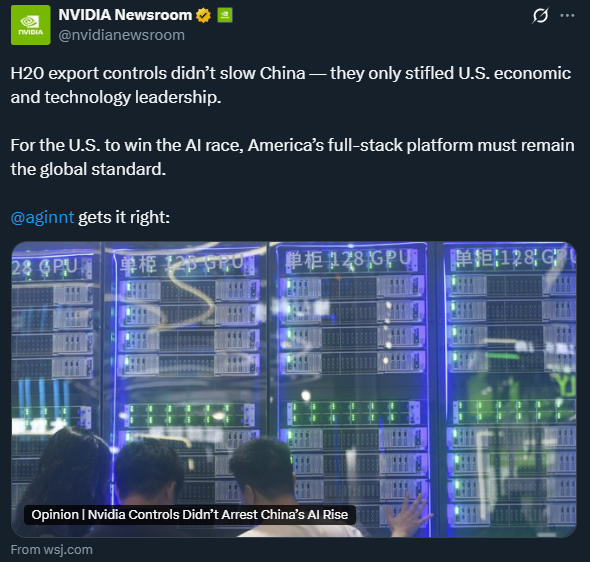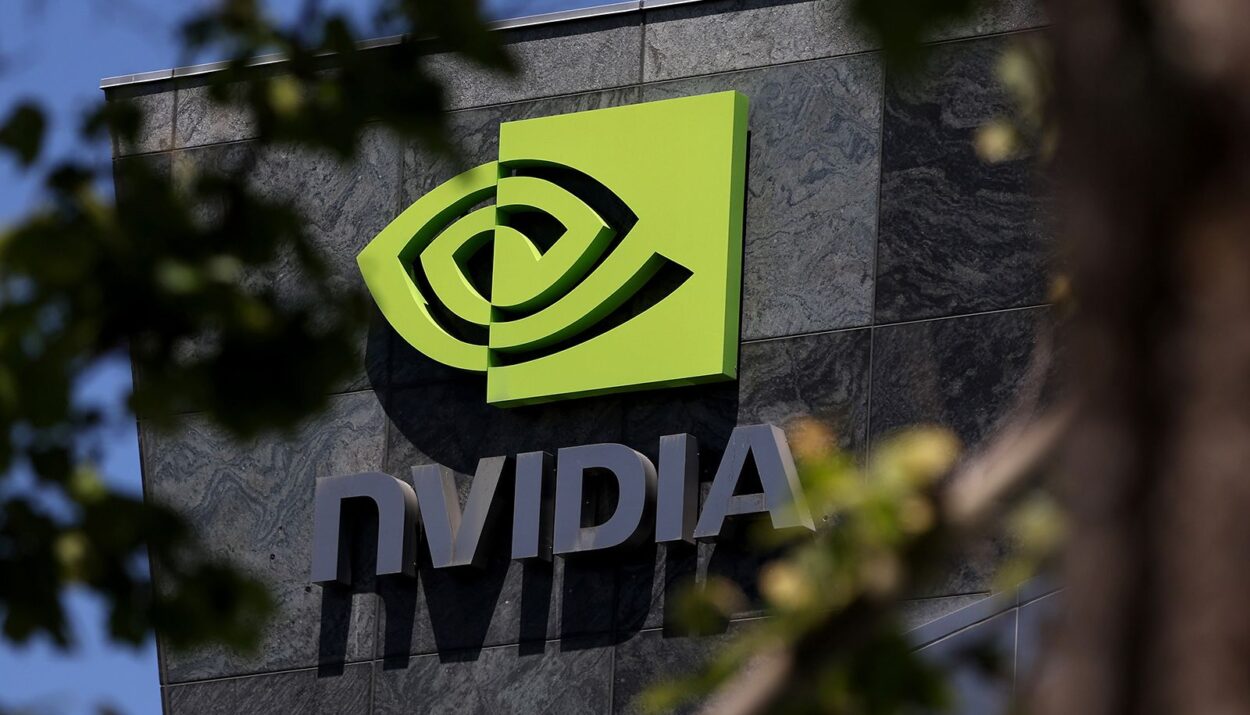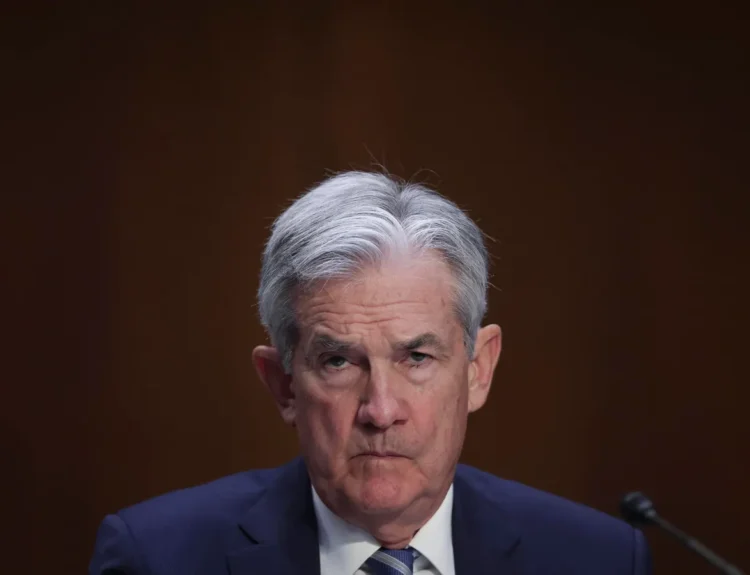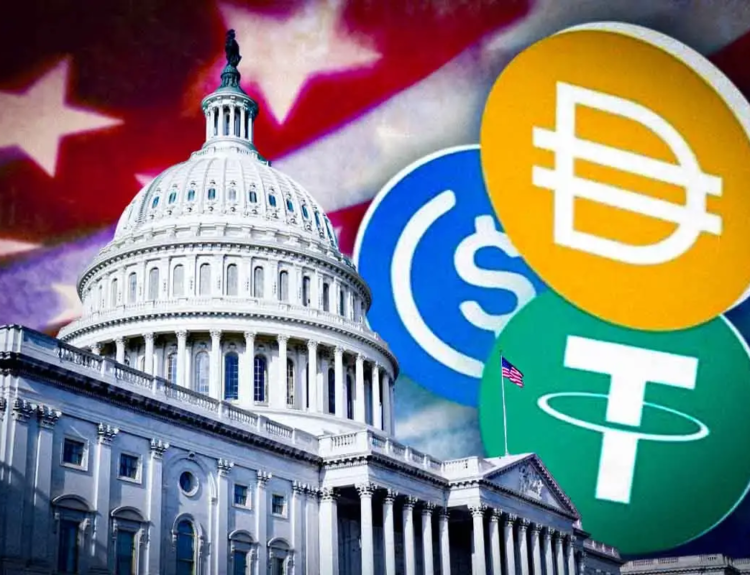Nvidia, now the world’s most valuable company at over $4.5 trillion, has found itself at the centre of President Donald Trump’s escalating trade battle with China. The semiconductor giant is not only facing U.S. export bans but has also agreed to an unprecedented arrangement with the White House — handing over 15% of all AI chip sales in China.
Nvidia’s Warning on Export Controls
Earlier this week, Nvidia publicly criticized Washington’s export ban on its H20 GPUs, echoing arguments made by AI entrepreneur Aaron Ginn. The company argued that the restrictions failed to slow China’s AI progress, but instead hurt U.S. leadership.
“H20 export controls didn’t slow China — they only stifled U.S. economic and technology leadership,” Nvidia wrote on X. “For the U.S. to win the AI race, America’s full-stack platform must remain the global standard.”
According to Nvidia, China has continued to make breakthroughs, with demand so strong that over $1 billion worth of GPUs were smuggled into the country in just three months.


The White House Deal
To resume legal sales, Nvidia and AMD struck a deal with Trump’s administration: pay 15% of Chinese revenues directly to the U.S. government in exchange for export licenses. The unusual “voluntary agreement” avoids constitutional restrictions on taxing exports but funnels billions into Washington’s coffers.
Analysts estimate that combined Chinese sales could top $35B annually, meaning the U.S. government could pocket around $5B per year.
“This move has no real precedent,” said Sarah Kreps, law professor at Cornell University. “It’s not a tax, not an equity stake — but effectively a mandatory revenue share.”
Risks to National Security
The policy reflects the administration’s internal divide: China hawks want tighter tech restrictions, while economic pragmatists prefer compromise. Trump himself left the door open for Nvidia to sell “downgraded” versions of its cutting-edge Blackwell chips in the future.
Still, national security experts warn the 15% cut doesn’t address the core concern — that advanced U.S. chips could boost China’s AI race.
“If there’s a real security risk, payments don’t solve it,” said Scott Kennedy of CSIS.
What’s Next for Nvidia?
Nvidia’s Chinese sales accounted for 13% of its 2024 revenue, meaning even with the White House’s 15% clawback, regaining access to the market could be highly lucrative. Shares of $NVDA ticked up 0.5% Monday after the deal was confirmed.
But Beijing has signaled skepticism, with state media hinting at “security concerns” over U.S. chips. Experts believe that’s less about rejecting Nvidia and more about pushing domestic innovation.
For now, Nvidia remains caught between Trump’s tariffs, Washington’s security fears, and China’s tech ambitions — with billions of dollars and the future of global AI leadership at stake.
Disclosure: This article does not represent investment advice. The content and materials featured on this page are for educational purposes only.
Related:
Why Stock Market Keeps Climbing Despite Tariffs and Tensions
Billionaire Investors Reveal Q2 2025 Portfolio Moves: Buffett, Ackman, Tepper, Burry & More
Trump’s Auto Tariffs Deliver $11.7 Billion Blow to Global Carmakers — No Relief in Sight
Inflation Data, Fed Policy Signals, and Key Earnings in Focus This Week
Trump Explodes Over Nancy Pelosi Stock Ban
Fed Governor Adriana Kugler Resigns, Opening Door for Trump
Trump Imposes New Global Tariff Rates, Effective August 7
What Happens After Tariff Deadline and What Next 72 Hours Look Like for Markets
Trump’s Tariffs Are Real, But Are His Trade Deals Just for Show?










